Audi Q3 vs Ford Ranger – Differences & prices compared
Compare performance, boot space, consumption and price in one view.
Find out now: which car is the better choice for you – Audi Q3 or Ford Ranger?
The Audi Q3 (SUV) comes with a Petrol, Diesel, Petrol MHEV or Plugin Hybrid engine and Manuel or Automatic transmission. In comparison, the Ford Ranger (Pickup) features a Diesel, Petrol or Plugin Hybrid engine with Manuel or Automatic transmission.
When it comes to boot capacity, the Audi Q3 offers 530 L, while the Ford Ranger provides – depending on how much space you need. If you’re looking for more power, decide whether the 272 HP of the Audi Q3 or the 292 HP of the Ford Ranger suits your needs better.
In terms of consumption, the values are 1.70 L per 100 km for the Audi Q3, and 3.10 L for the Ford Ranger.
Price-wise, the Audi Q3 starts at 35100 £, while the Ford Ranger is available from 34500 £. Compare all the details and find out which model fits your lifestyle best!
Audi Q3
The Audi Q3 seamlessly blends practicality with luxury, making it an ideal choice for urban dwellers and adventure seekers alike. With its striking design and sophisticated interior, the Q3 offers a premium driving experience that caters to both comfort and style. As a compact SUV, it effortlessly navigates through city streets while providing ample space for passengers and cargo.
details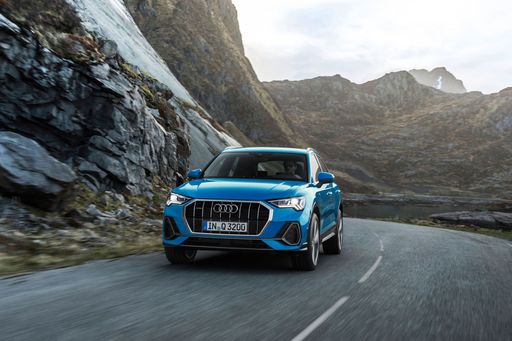 @ audi-mediacenter.com
@ audi-mediacenter.com
 @ audi-mediacenter.com
@ audi-mediacenter.com
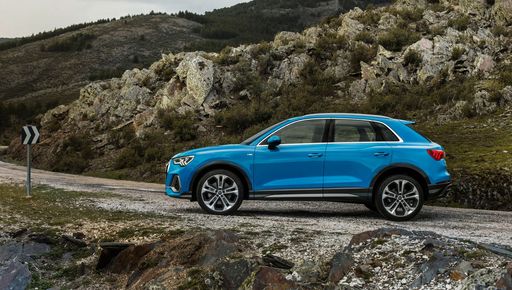 @ audi-mediacenter.com
@ audi-mediacenter.com
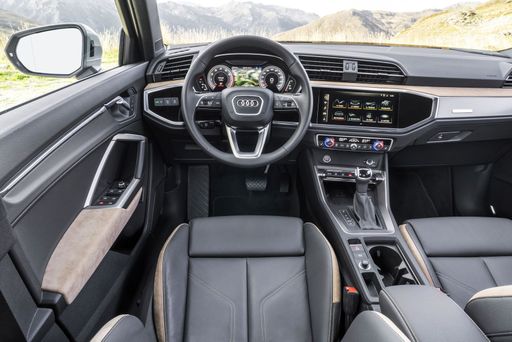 @ audi-mediacenter.com
@ audi-mediacenter.com
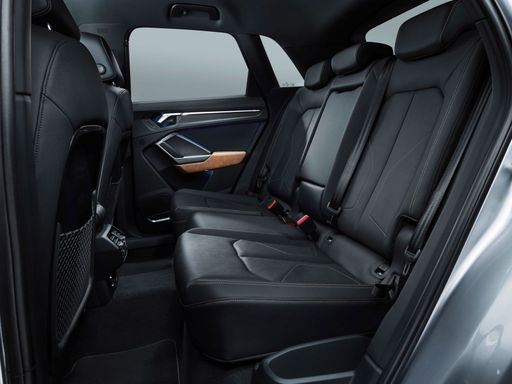 @ audi-mediacenter.com
@ audi-mediacenter.com
Ford Ranger
The Ford Ranger stands out in the pickup market with its robust build and versatile capabilities, making it a popular choice for both work and leisure. Its modern design is complemented by a well-equipped interior, providing comfort and advanced technology. Whether tackling challenging terrains or cruising through the city, the Ranger delivers a reliable and dynamic driving experience.
details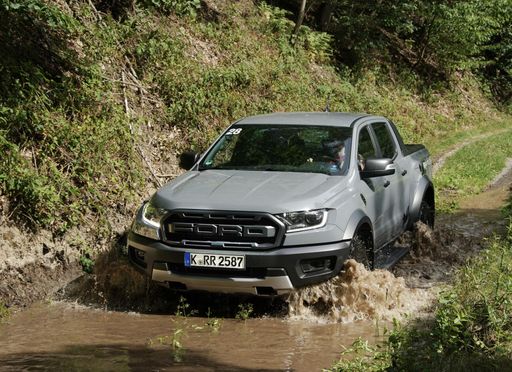 @ media.ford.com
@ media.ford.com
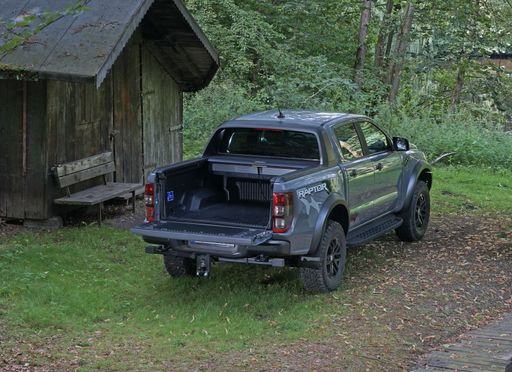 @ media.ford.com
@ media.ford.com

|

|
|
|
|
Costs and Consumption |
|
|---|---|
|
Price
35100 - 51300 £
|
Price
34500 - 68800 £
|
|
Consumption L/100km
1.7 - 8.6 L
|
Consumption L/100km
3.1 - 13.8 L
|
|
Consumption kWh/100km
-
|
Consumption kWh/100km
-
|
|
Electric Range
119 km
|
Electric Range
50 km
|
|
Battery Capacity
19.70 kWh
|
Battery Capacity
11.80 kWh
|
|
co2
39 - 195 g/km
|
co2
70 - 315 g/km
|
|
Fuel tank capacity
45 - 60 L
|
Fuel tank capacity
80 L
|
Dimensions and Body |
|
|---|---|
|
Body Type
SUV
|
Body Type
Pickup
|
|
Seats
5
|
Seats
2 - 5
|
|
Doors
5
|
Doors
2 - 4
|
|
Curb weight
1525 - 1900 kg
|
Curb weight
2082 - 2486 kg
|
|
Trunk capacity
375 - 530 L
|
Trunk capacity
-
|
|
Length
4500 - 4531 mm
|
Length
5370 - 5420 mm
|
|
Width
1843 - 1859 mm
|
Width
1918 - 1968 mm
|
|
Height
1567 - 1601 mm
|
Height
1868 - 1922 mm
|
|
Payload
455 - 535 kg
|
Payload
676 - 1108 kg
|
Engine and Performance |
|
|---|---|
|
Engine Type
Petrol, Diesel, Petrol MHEV, Plugin Hybrid
|
Engine Type
Diesel, Petrol, Plugin Hybrid
|
|
Transmission
Manuel, Automatic
|
Transmission
Manuel, Automatic
|
|
Transmission Detail
Manual Gearbox, Dual-Clutch Automatic
|
Transmission Detail
Manual Gearbox, Automatic Gearbox
|
|
Drive Type
Front-Wheel Drive, All-Wheel Drive
|
Drive Type
All-Wheel Drive
|
|
Power HP
150 - 272 HP
|
Power HP
170 - 292 HP
|
|
Acceleration 0-100km/h
5.7 - 9.5 s
|
Acceleration 0-100km/h
7.9 - 12.1 s
|
|
Max Speed
200 - 240 km/h
|
Max Speed
180 - 190 km/h
|
|
Torque
250 - 400 Nm
|
Torque
405 - 697 Nm
|
|
Number of Cylinders
4
|
Number of Cylinders
4 - 6
|
|
Power kW
110 - 200 kW
|
Power kW
125 - 215 kW
|
|
Engine capacity
1498 - 1984 cm3
|
Engine capacity
1996 - 2993 cm3
|
General |
|
|---|---|
|
Model Year
2025
|
Model Year
2022 - 2025
|
|
CO2 Efficiency Class
E, G, F, B
|
CO2 Efficiency Class
G, B
|
|
Brand
Audi
|
Brand
Ford
|
Audi Q3
The Audi Q3 stands as a prime example of what modern compact SUVs can achieve, combining dynamic performance with cutting-edge technology and refined luxury. This versatile vehicle caters to a diverse audience, offering a range of engine options and innovative features that elevate the driving experience.
Engine Performance and Efficiency
The Audi Q3 impresses with its selection of powertrains, particularly the 2.0-litre turbocharged engines which are available in both petrol and diesel variants. With power outputs ranging from 150 PS to 245 PS, there's a model to suit varying performance needs.
Efficiency is also a highlight, with diesel variants achieving impressive fuel consumption figures as low as 5.5 L/100km. In contrast, petrol options balance power and economy, maintaining competitive consumption levels. Such efficiency is complemented by low CO2 emissions, making the Q3 a smart choice for eco-conscious drivers.
Transmission and Drive Options
Transmission options for the Audi Q3 include both manual and automatic gearboxes, including Audi’s advanced seven-speed S tronic dual-clutch transmission. This allows for swift gear changes and enhances driving dynamics. All-wheel drive is available on select models, providing superior traction and stability, especially in adverse weather conditions.
Technological Innovations
Stepping inside the Audi Q3 reveals a meticulously designed cabin outfitted with the latest technology. The Virtual Cockpit, a fully digital driver display, allows for extensive customisation of vehicle information. The infotainment system also integrates seamlessly with smartphone applications through Apple CarPlay and Android Auto, ensuring connectivity on the go.
Moreover, safety features like adaptive cruise control, lane assist, and a 360-degree camera add a layer of confidence for the driver, making every journey more secure.
Comfort and Space
Space is a defining characteristic of the Q3, which comfortably seats five passengers. The vehicle offers a generous boot capacity of 530 litres, making it practical for both daily commutes and weekend adventures. Additionally, the interior design exudes sophistication with premium materials and ambient lighting, creating an inviting atmosphere.
Pricing and Market Position
Starting at competitive pricing within its class, the Audi Q3 offers outstanding value, considering its extensive list of features and luxurious feel. Prices ranging from approximately €38,300 to €52,750 ensure that there's a model suited for various budgets, appealing to both entry-level buyers and those looking for top-tier specifications.
Conclusion
In summary, the Audi Q3 combines performance, technology, and luxury in a compact SUV design. With a variety of engine choices, advanced safety features, and a spacious interior, it caters to the needs of modern drivers. Whether you are navigating city streets or exploring the great outdoors, the Q3 proves to be an exceptional companion on the road.
Ford Ranger
A Comprehensive Look at the Ford Ranger: Versatility Meets Innovation
The Ford Ranger has long been a staple in the world of pick-up trucks, renowned for its robust design and versatility. Whether for rugged off-road adventures or everyday utility tasks, the Ford Ranger continues to be a frontrunner in the pick-up segment. In this article, we explore the technical details and innovative features that set the latest versions of the Ford Ranger apart from its competitors.
Powertrain Performance: A Range of Choices
The Ford Ranger offers a selection of powerful engines, catering to a diverse set of user requirements. Engine options range from the fuel-efficient 2.0-litre EcoBlue diesel engine to the robust 3.0-litre EcoBoost petrol engine, offering impressive outputs from 170 to 292 PS. These engines are paired with either a manual or an advanced automatic transmission, both providing smooth shifting and optimised performance across various driving conditions.
The Ranger’s all-wheel-drive system ensures a robust off-road capability while maintaining a composed ride on urban roads. With torque figures ranging between 405 Nm and 600 Nm, the Ranger guarantees ample pulling power whether you're on or off the beaten track.
Fuel Efficiency and Environmental Considerations
Recognising the importance of balancing performance with efficiency, the Ford Ranger delivers competitive fuel consumption figures ranging from 8.4 to 13.8 litres per 100 km. Despite its robust performance capabilities, the Ranger remains mindful of its environmental footprint, maintaining a functional balance between power and efficiency with a CO2 efficiency class of G.
Advanced Safety and Technology Features
Incorporating cutting-edge technology, the Ford Ranger is equipped with a suite of safety features designed to protect both passengers and payload. Among these are adaptive cruise control, lane-keeping assistance, and a pre-collision assist system, enhancing the driver's ability to navigate both rural roads and busy motorways safely and efficiently.
Moreover, the interior tech suite includes an intuitive infotainment system, complete with connectivity options for seamless integration of smartphones and smart devices. This ensures drivers and passengers can stay connected and entertained on all journeys.
Customisation and Comfort
The Ford Ranger offers a variety of trim levels, allowing customers to tailor the vehicle to their specific needs. From the rugged XL 4x4 to the luxurious Platinum e-4WD Automatik, there is a model to suit every preference and requirement. Equipment lines such as Wildtrak and MS-RT add enhanced styling and additional features for those seeking a more distinctive and upscale appearance.
Inside, the Ranger provides comfortable seating configurations for up to five passengers, with premium materials and ample storage space to ensure every journey is a pleasant experience. Users can also benefit from a range of comfort features, including climate control, premium audio systems, and adjustable seating.
Practicality Meets Payload
The Ford Ranger excels in practicality with its impressive payload capacity and spacious cargo bed, suitable for carrying everything from work equipment to recreational gear. With a maximum payload of up to 1,108 kg, the Ranger is more than capable of handling heavy loads, making it an ideal choice for both professional and personal use.
Additionally, the robust chassis and durable build quality provide long-lasting performance even under the most demanding conditions, ensuring reliability and endurance in the long term.
Conclusion: A Resilient Companion for All Terrains
With its capable engine choices, outstanding off-road capabilities, and a host of advanced features, the Ford Ranger continues to lead the way in the pick-up truck category. Whether for practical utility, adventurous pursuits, or simply as a reliable daily vehicle, the Ranger delivers on all fronts – a true testament to Ford’s commitment to innovation and quality in the automotive industry.
The prices and data displayed are estimates based on German list prices and may vary by country. This information is not legally binding.
